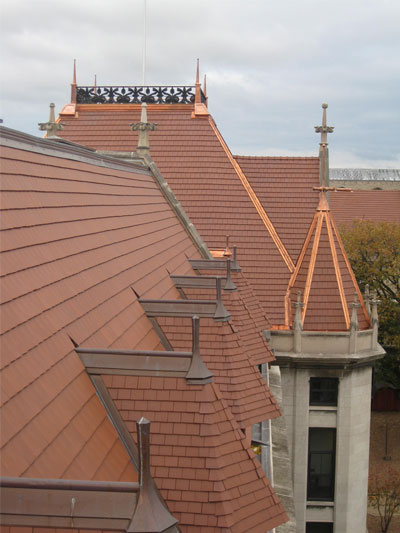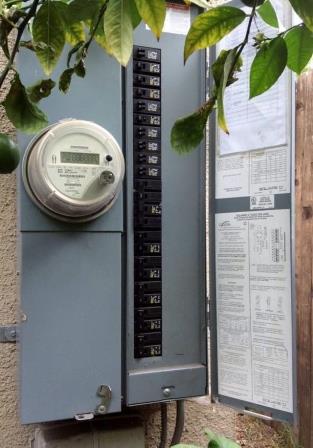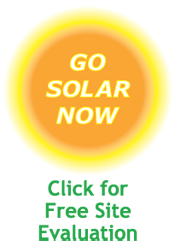Welcome to the
Run on Sun Monthly Newsletter

In this Issue: |
October, 2015
Volume: 6 Issue: 10
Assessing My Home's Solar Potential: Step-by-Step
(Also: check out our 3-part series Explaining Solar Terminology.) 1. My electric bills are killing me!If your electric bills average $100 or under each month, solar probably won't be more cost-effective than paying the utility. The costs for permitting, design and engineering all stay the same whether you buy a 3kW system or a 10kW system. Indeed, the labor required to install 5 panels and 10 panels is not very different since installers still have the same amount of electrical ground work. The installation of the actual panels is only a fraction of the total labor. Even the costs of products improves in bulk, so the bigger the system, often the better price per Watt you can get. Beyond this, there are many other things to consider such as whether you plan to increase your usage significantly in the future. But since utilities don't want you to be an energy producer they won't actually allow for more solar than your historical needs indicate... unless you plan to buy an electric vehicle. These are things you should discuss more in detail with your qualified installer. 2. My roof is perfect for solar...right?In my blog piece "Roofing Reality Check", I outlined the main things to consider when you examine your roof's potential. Here are the highlights:
Roofing Materials: The best roofing material for solar is composite shingles. Developments have been made to safely attach solar panels to metal and tile roofs but the cost for the racking attachments and labor are frequently higher. Run on Sun prefers to remove tile where the array will go, re-roof with composite shingles, install the solar, and backfill with remaining tiles. This incurs a re-roofing cost but is the safest way to avoid roof leaks and ensure safe attachment of the array to the rafters. 3. Solar's arch nemesis...shade.One of the first things an installer will do is take a quick look at a satellite image of your property to check for shade elements as well as the layout of your roof. A useful tool in the Los Angeles area is the LA Solar Map. This takes into account shading throughout the year and provides a handy report on your property's viability for solar. It isn't a perfect tool, however, so take a look around your property and note if there are any trees shading the roof spaces that you've identified as ideal for solar. Trees to the north would not pose a threat since solar will never be placed on a north-facing roof. But tall foliage to the south could negate any energy production value of a solar array. All may not be lost as microinverters, like the ones from Enphase that we feature on our projects, can do a lot to salvage a site plagued with shade. But even with this technology, 100% shaded areas are a non-starter. In addition to trees, note tall parapets on a flat roof, chimneys, satellite dishes, HVAC units, and second story walls which directly shade your ideal roof spaces. 4. Can my electrical system handle it?
Unfortunately upgrading your service will add some cost. Ask your solar installer for their opinion but if any of the above rings true be prepared for this additional hurdle to sunshine power. 5. It's all about the money...The reality is, solar is an investment. While some companies may insist you can go solar for free, I would never count on getting something for nothing. We have outlined some of the myriad reasons we recommend avoiding zero-down solar leases in other posts like "Top 5 Reasons to Stay Away from that Solar Lease" and "The Perils of Solar Salesmen". Frankly, the costs can more than double over time when you lease instead of purchase your system. So the last step to assess if you are a good candidate for solar is to assess your financial position. There are many low-interest solar loan options out there as well as property-assessed PACE financing, but in order to get the economic value of solar you need to be prepared to own the system outright. This way you can take the 30% federal tax credit and any additional rebates if available from your utility. To give you a ball-park idea of the cost for going solar in Run on Sun's service area (LA Metro area) today, including design, labor, permit fees and the whole shebang, is roughly $4 to $5 per Watt. This means that an average house with a 5kW system will cost between $20,000 and $25,000 before rebates and incentives. Obviously the cost will be on the low end if you have a composite-shingle, single-story, low-pitched roof with no need for a service panel upgrade. Depending on your electric bills pre-solar, this investment can pencil out with a return in as early as year 5 or as late as year 10+. But deciding if the financial outlay is worth the long term investment is something you must assess before signing on the dotted line. After going through the above steps you should have a solid idea of whether solar is right for your home or not. If you've determined its a go, the next step is to call your local installer and make sure they check all the same qualifiers and more. Now that you're an expert on solar assessment 101 you can even suggest solar to any neighbors with homes that beg to be powered by the sun! |
“While some companies may insist you can go solar for free, I would never count on getting something for nothing…”
Get your copy of
Commercial Solar:
Step-by-Step
from
Run on Sun
Founder & CEO
Jim Jenal

Now available on Amazon.com
in both
Print & Kindle versions.
Bonus - Buy the Print version…
Get the
Kindle version for Free!
Commercial Solar:
Step-by-Step
from Run on Sun
Founder & CEO
Jim Jenal

Now available on Amazon.com
in both Print & Kindle versions.
Get the Kindle version for Free!
Help Us Spread the News!


We use Angie's List to assess whether we're doing a good job keeping valued customers happy. Please visit AngiesList.com in order to grade our quality of work and customer service.
3 Rules to Avoid Shady Solar ContractsSo you've decided to go solar (congratulations!) and you are about to sign on the dotted line. Before you do, please take a moment and follow these three simple rules to avoid getting burned.
We see examples of solar contracts all the time, and some of them are pretty appalling. Written in tiny fonts, they just beg you to give up and simply ask, "Where do I sign?" Resist that temptation at all costs, less you discover the hard way that some unscrupulous contractor (or even worse, his unscrupulous lawyer) has snuck some awful prevision into your contract. Think I'm exaggerating? Take this beaut for example, from a section on Change Orders:
Holy smokes! According to this, if the parties disagree as to the cost of a Change Order (more on this in a moment), then the cost is whatever the contractor says he has spent, plus 12%! What thinking person would agree to sign such a contract - or choose to do business with someone who is presenting it? Someone who didn't take the time to read it, that's who! Rule #2 - Be Sure the Essential Terms are There!A contract is formed when someone - a contractor in our example - offers to do something - in this case install solar on someone's home - and a second person - the homeowner here - accepts the offer and agrees to pay to have the work done. In order for a contract to be binding, the parties must actually agree on all of this, which is to say that the homeowner must know certain essential terms. For example:
Rule #3 - When in Doubt, Wait!Finally, if you are feeling rushed by the contractor (or his sales agent) to "just go ahead and sign already!" - then it is time to take a break. A legitimate contractor wants you to be comfortable with what you are signing. After all, a legit contractor doesn't want there to be any confusion about what is going to be done or how much it will cost. So the legit contractor will be happy to answer your questions before you sign, knowing that creating understanding now, will help eliminate disputes later on. But the shady contractor just wants you to sign now - and give them a check! (Oh, and a word about initial payments - for a residential project, California law prohibits a solar contractor from asking for more than $1,000. A contractor who asks for more before work is done is violating the law.) Worst case, go full stop and tell the contractor you want more time to review the deal before you sign. If you have doubts, consult a lawyer - yeah, yeah, I know all about lawyers (I used to be one!) but a little time spent now may save you major aggravation down the road. And you don't want to end up on the wrong end of a bad deal. |
Preparing for the End - of the Solar Tax CreditOne of the chief economic benefits of going solar is the 30% Investment Tax Credit (the "ITC"), but it is scheduled to go away at the end of next year. Here is what you need to know now if you hope to save yourself some serious coin on your solar system. There are three economic benefits from going solar: rebates from the utility, savings on your utility bill, and the ITC. For clients in the Run on Sun service area, only PWP and LADWP are presently offering rebates (sorry SCE folks) but at 40¢ and 30¢ per AC Watt installed, these rebates top out at roughly 10% of your cost. Monthly savings from solar will vary depending on how big a user you are and what rate structure you are under. Typically, SCE customers save more with solar because their rates are that much higher.
On top of that, commercial clients not only get the ITC, they also get accelerated depreciation, making the tax advantages of solar even more attractive. And yet, unless Congress acts (and really, does anyone have confidence in the ability of this Congress to do much of anything?), this will all end come December 31, 2016. (Ok, small caveat - commercial projects will continue to get 10%, but for residential clients it will be nada, nothing, zilch.) I can hear you already saying, come on, that's over a year away - why are you raising this issue now? Well aside from the old warning: "Caution - dates on the calendar are closer than they appear!" -- it is important to understand what is likely to happen next year. Every solar company out there will start advertising about the need to "act now" only this time they will be right. As more and more people realize that they are about to leave a whole bunch of money on the table, the crush to get projects in the pipeline and completed before the deadline will mean more demands on already understaffed city building departments (many of whom routinely take six weeks or more now to approve even the simplest solar project), inspectors, and utility staff to process an unprecedented flood of applications. As we move through next Spring, many solar companies will already be booked so completely that homeowners who are just waking up to the problem, might find themselves in a pipeline with no guarantee that their project will be completed in time to qualify for the ITC. So what to do? Well, for the good of the solar industry as a whole you should contact your Member of Congress and urge him/her to support the extension of the ITC. If you have friends and family who live in more conservative areas, be sure to urge them to do the same. But as for your own solar project, the time to get started is now! Don't be the sad-sack who gets shut out of affordable solar because they waited too long. |





